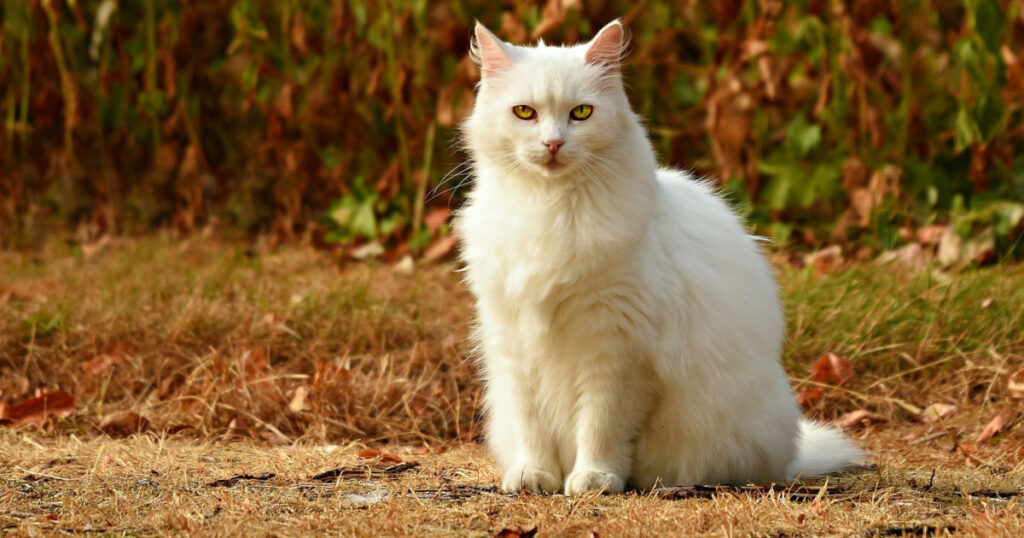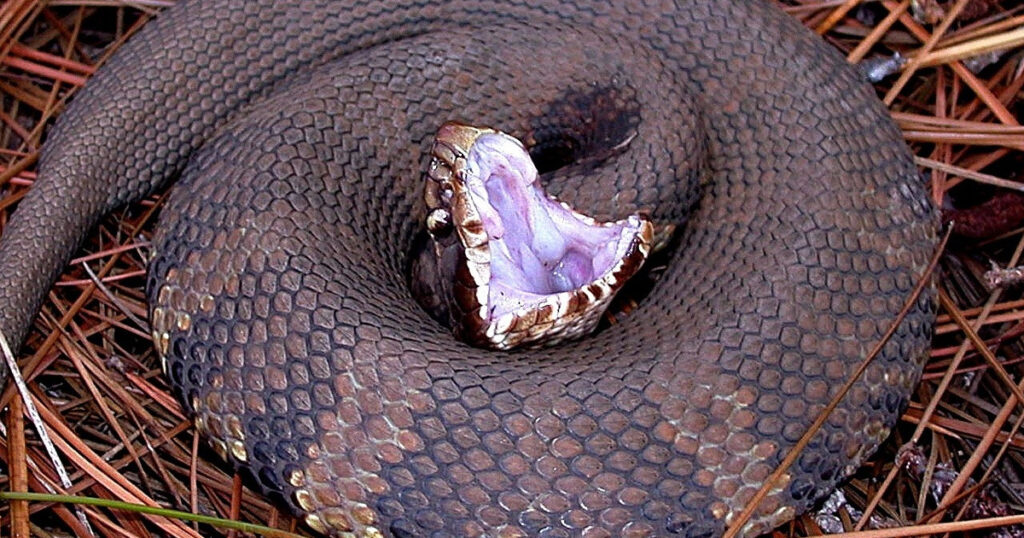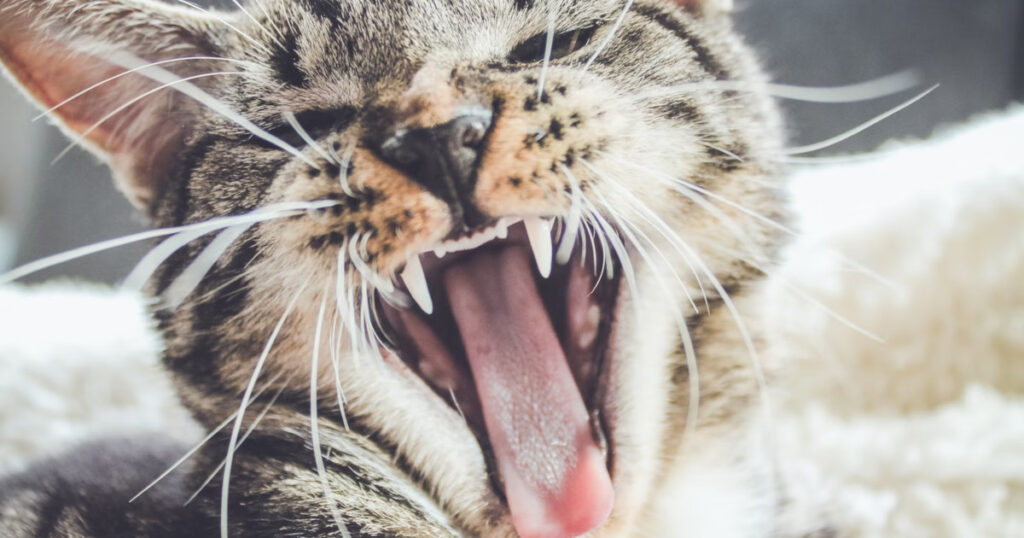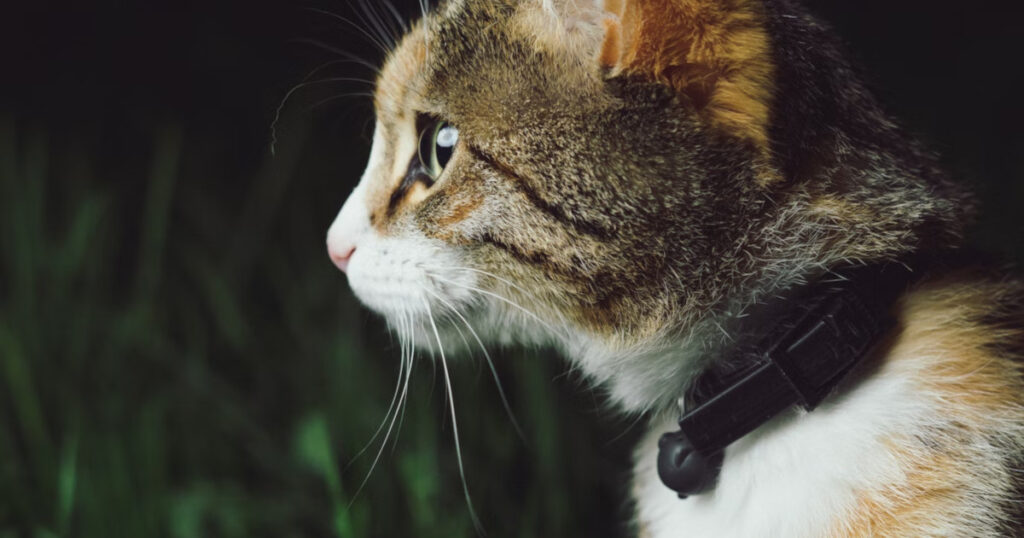One of the worst fears of cat owners is that a snake has bitten them. A snake bite on cat family members can be terrifying and upsetting. In this article, we look at what is best in these circumstances.
What are the Cat Bitten by Snake Symptoms?

There are many cat snake bite symptoms that you need to look for. A cat snake bite can be very small. Usually, the bite leaves almost no marks on the cat or very small pinpricks. And if the snake that has bitten the cat is not venomous, there is very little that can be done and there should be no other symptoms, but the cat might limp.
In the long term, you might want to check that the bite doesn’t get infected. An infected snake bite on a cat will look like other infected cuts or grazes on a cat. Cats can become very ill, but this is because the cut has become infected from not being clean, not because of the snake bite.
However, the snake bite on cat symptoms from a venomous species, like the Cottonmouth snake (agkistrodon piscivorus) is very different. To start with you might need to look at the cat’s behavior after a snake bite.
A cat having been bitten by a venomous snake will often appear to be lethargic, perhaps wobbling when they walk. The cat might also be reluctant to eat, have diarrhea, or vomit.
Can a Cat Survive a Snake Bite?
Fortunately, if you do spot these signs, then you can rush your cat to an emergency vet and there is a good chance that your cat will survive. Cats have a better survival rate than dogs. To help care teams to treat your cat, identification of the snake that bit your cat is advisable. However, this is often hard to achieve if your cat is free roaming.
Speed is the important factor here. The quicker your cat is treated, the higher the chances of survival.
What Does a Snake Bite on a Cat Look Like?

There aren’t many ways to distinguish a snake bite on cat family members from other injuries. The bites are normally very small. Some people resort to Google, using the search term “snake bite on cat pictures’ but that doesn’t help. Some of the images that will appear are from species not found in the US and others are fictional.
The best option is to look for the specific symptoms of the snake bite like behavioral changes. If you notice them, it is a good sign to take your cat to the vet. It might be unrelated to a snake bite, but the symptoms of a snake bite are cause for concern whatever the cause.
Can a Snake Kill a Cat?
Unfortunately, a snake can kill a cat. It is relatively simple for some venomous species to kill a cat. However, as mentioned, they have a survival rate that is higher than dogs, and more often than not a cat will survive.
There are rumors and headlines in the news that talk about a cat eaten by snake species that are frequently found near homes. In the US this has not been the case. While some snakes in the Everglades are growing to the size that could swallow a cat, most snakes in the US can’t eat a cat.
The snakes in the Everglades are an invasive species that were accidentally released after Hurricane Andrew in the early 1990s damaged a breeding center.
Most snakes consider a cat to be the predator and a threat to them. And it is the cat’s natural curiosity about the snakes that often leads to a confrontation between the two.
Will a Cat Kill a Snake?

In general, a cat will kill a snake. Cats are natural predators, one of the best evolved on the planet, and very successful. Cats have been implicated in the extinction of two reptile species, 21 mammals and 40 birds.
However, their ability and willingness to kill a snake are also a fault. Snakes know cats are predators and will defend themselves. And the only way that a snake can defend itself is through biting. A non-venomous snake will leave a cut on your cat, and it might learn to avoid the species in the future. But a bite from a venomous snake, even if the cat manages to kill the snake in the end, could lead to medical problems.
How to Keep Snakes and Cats Apart
The only true form of protection for a cat is to ensure that your cat’s family members and snakes do not come into contact. There are several options for this.
1. Keep Cats in Specific Areas
While there is a long-standing tradition of allowing cats to roam free, this isn’t always good for them. Cats, as mentioned, are known to kill wildlife and can be harmed by wildlife or even other human activity. Therefore, cats might be best to be confined. One option is to dedicate time and build a large outdoor enclosure for them to enjoy and connect it to the house.
2. Use a Bell Collar
Protect the local wildlife by having a bell collar on your cat. When the cat moves, the collar makes a noise alerting wildlife that the cat is around. This will scare most animals, including snakes away before the cat can get close enough.

3. Envirobug
Another option is to use Envirobug, an ecological way to deter snakes from your property. It uses vibrations to simulate large predators in the area. The snake will then avoid the area for survival. Envirobug comes in pairs that can protect a typical family home and can be solar-powered.
Final Word: Snake Bites on Cat
Cats and snakes are not best friends. Snakes view cats as predators and cats are curious. When the two come close to each other, it is a risky situation. A bite might not be something to worry about, but it could also be risky for your cat. If you suspect a bite, take your cat immediately for treatment and take steps to prevent reoccurrence.